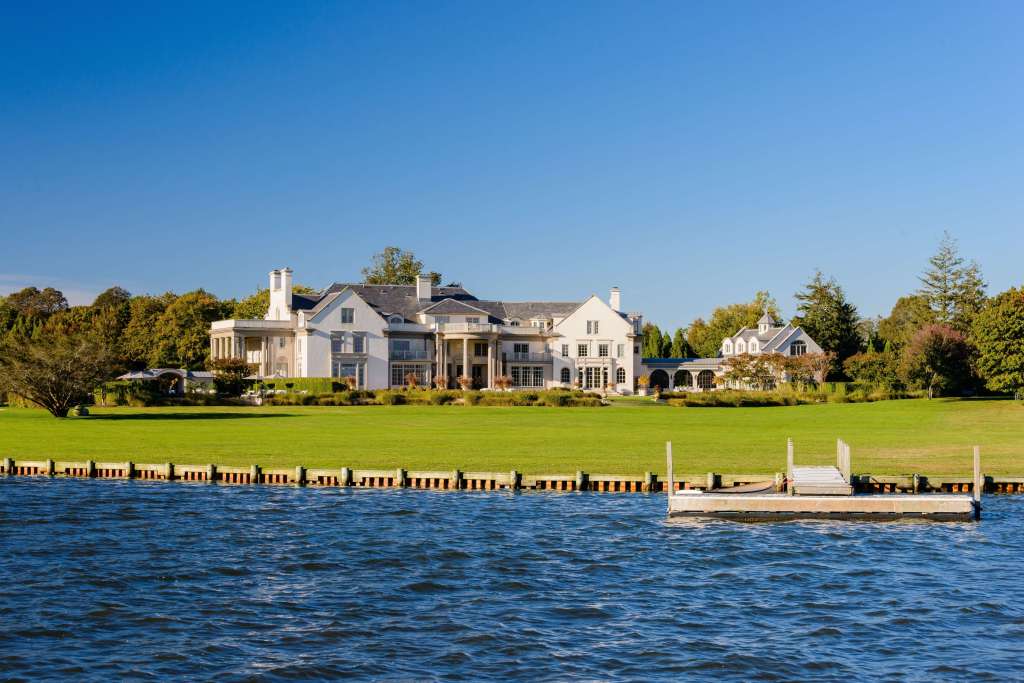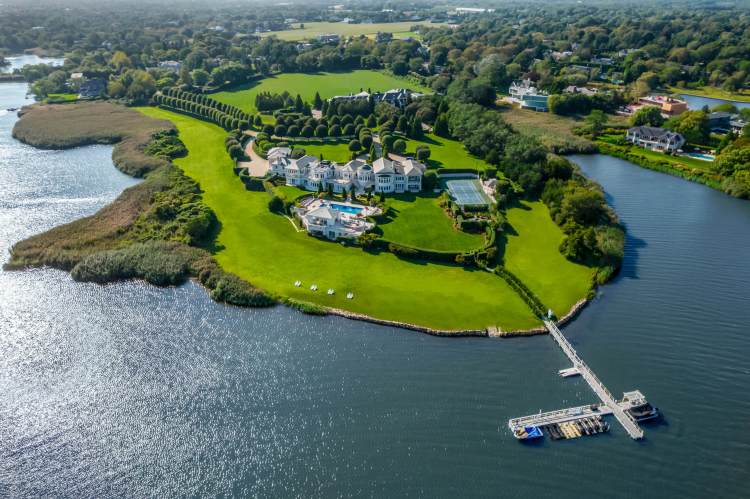The Hamptons today are known for over-the-top real estate, but the homes of today cannot compare to the estates of last century. Take, for example, the Dunes, the estate of ink manufacturer Frank Wiborg. Originally 600 of oceanfront land in East Hampton, the property comprised a mere 80 acres by the time the house, designed by Grosvenor Atterbury, was completed in 1895. The 30-room house had a view of the ocean on one side and a view of the village on the other. The grounds also included stables, a dairy, garages, a laundry house and servants’ quarters.
Bayberry Land in Southampton: 314 acres of monumental gardens. A main house with 11 bedrooms, 11 baths, 11 chimneys, and a large ballroom. There was also the main garage, gatehouse, caretaker’s cottage, hunting lodge, stables, secondary two-car garage with pump house, and tennis court. It was assessed as the most valuable property in Southampton in 1918.
Let’s take a look at some of the greatest mansions and gardens of the Hamptons of yesterday.

Bayberry Land was at present-day Sebonac Road, on the bay. It was built in 1918; grounds were designed by Marian Cruger Coffin, a pioneer in the field of landscape architecture. Charles Sabin was a banker, while his wife, Pauline Morton Sabin, was a political activist and a significant leader in the fight to repeal Prohibition. In 1949, the property was purchased by the International Brotherhood of Electrical Workers (IBEW) to serve as a convalescent home for electrical workers. The IBEW sold the property in 2001 to a developer, who created the Sebonack Golf Club on the property.
Meadow Lane, then as now, was full of great estates. One was known as Villa Maria (of course, this was a different house than the one now on Montauk Highway). This house was designed by architect Edward P. Mellon (yes, of the banking family) for himself c. 1919 in the Italian style. (As we’ll see, Italianate style was all the rage for country homes a hundred years ago. To add to the Italian feel, Mellon installed a blue plaster fanlight above the door with a bas-relief of the Madonna and Child, imported stone mantels from Perugia, and hung an 18th-century blue-and-gold frieze salvaged from the Palazzo Torlonia,) The property ranged from the ocean to the bay, with a bayside boathouse and dock, both demolished. The house itself was demolished in 1954 and rebuilt about 40 years later.
Those who didn’t want an Italian feel to their property included famous Americana collector Henry Francis du Pont and his wife, Ruth Wales du Pont. They wanted “an American house,” with architectural elements largely from Chestertown, Maryland. The place was known as Chestertown House and was also on Meadow Lane. After du Pont’s 1969 death, the house was purchased by Andy Warhol’s protégée Baby Jane Holzer, who promptly defaulted on the mortgage. Then Barry Trupin, infamous financier, rebuilt the house into a place known as Dragon’s Head in the 1980s, to the horror of Southampton society. After Trupin went to jail, Calvin Klein bought the property, razed Dragon’s Head, and built a minimalist glass box in its place.
Villa Mille Fiori was built 1910 for attorney Albert Barnes Boardman by architects Hill & Stout on Great Plains Road in Southampton. It was a 24-room, four-story house based on the Villa de Medici in Rome. Six bedroom suites overlooked an Italian Renaissance garden. It cost $250,000 to build, and was sold at auction in 1938 for $16,000. The main house was torn down in the 1960s, but eight acres of the estate are still left; they sold for $11.8 million in 2018.
The original Wooldon Manor was enormous, oceanfront on Gin Lane. Yes, you heard that Wooldon Manor sold for $80 million several years ago, but that was the pool house to the original mansion. You can see why it was called the most opulent home in the Hamptons.
The original house was built in 1900 for Dr. Peter Wyckoff. Dr. Wyckoff sold the house in 1928 to Jessie Woolworth Donahue, the daughter of F.W. Woolworth, the founder of Woolworth’s. Jessie renovated and expanded the estate, building the pool house in 1930, and of course renamed the estate after herself. The last owner of the whole estate was Edmund Lynch of Merrill Lynch. After his death in 1941, the mansion was pulled down, the estate subdivided, and the outbuildings turned into residences.
Black Point, on Old Town Road in Southampton, was the 60-acre estate of Col. H.H. Rogers, heir to a banking and Standard Oil fortune, and he was the father of midcentury fashion icon Millicent Rogers. The house was designed by Walker and Gillette, built in 1914, and the grounds were designed by the Olmsted brothers.

Moving on to North Haven, Andelmans was designed for Joseph Fahys by Montrose W. Morris c. 1889. Fahys was founder and president of Joseph Fahys & Co., founder of the New York Jewelers’ Board of Trade and the first president of the Watchcase Manufacturers’ Association. (Yep, that’s right, owner of the Sag Harbor Watchcase Factory.) The house was eventually demolished. Later Tommy Mottola of Sony Music lived in the carriage house.
Now we’re in East Hampton. Kyalami, which means “home” in Zulu, was built in 1902 for actor John Drew, uncle of the Barrymores. (And yes, the theater at Guild Hall is named after him.) It was located on Lily Pond Lane. Kyalami had 12 bedrooms–six for the family, six for the servants. After the house was finished, Drew ordered a miniature copy of it to serve as a portable bathhouse. It was rolled down to the beach in June and brought back in the fall. Kyalami was was demolished in the 1940s.
The Dr. Clarence C. Rice house was designed by Grosvenor Atterbury c. 1899. Rice, an ear, nose and throat specialist, was the house doctor for the Metropolitan and Hammerstein Opera Houses and treated Lillian Russell and Enrico Carsuo. The house, on Hither Lane, burned down in 1912. Later the carriage house was owned by Evan Frankel and called Brigadoon, after he invested in the Broadway play.
The Dunes was originally on 600 acres between Hook Pond and the Atlantic Ocean. It included a famous Italian sunken garden, where Mrs Wiborg and her daughters loved to plant. One daughter, Sara, married leather heir Gerald Murphy and become a Jazz Age socialite whose circle of friends included Ernest Hemingway, Cole Porter, Dorothy Parker and Pablo Picasso.
Sadly, the Dunes suffered the same fate for the same reason most of these great estates did: demolition because times had changed and it was too expensive to keep the place up. Much of the house was damaged in the 1938 hurricane, and it was finally torn down by Gerald and Sara Murphy in 1942 when the Murphys couldn’t rent or sell the enormous house. The servants’ quarters and garage remained. It was known as the Pink House when the Murphys’ daughter painted the stucco exterior pink, but was itself demolished in 2010. However, the name Wiborg still lives on in the nearby beach.



















